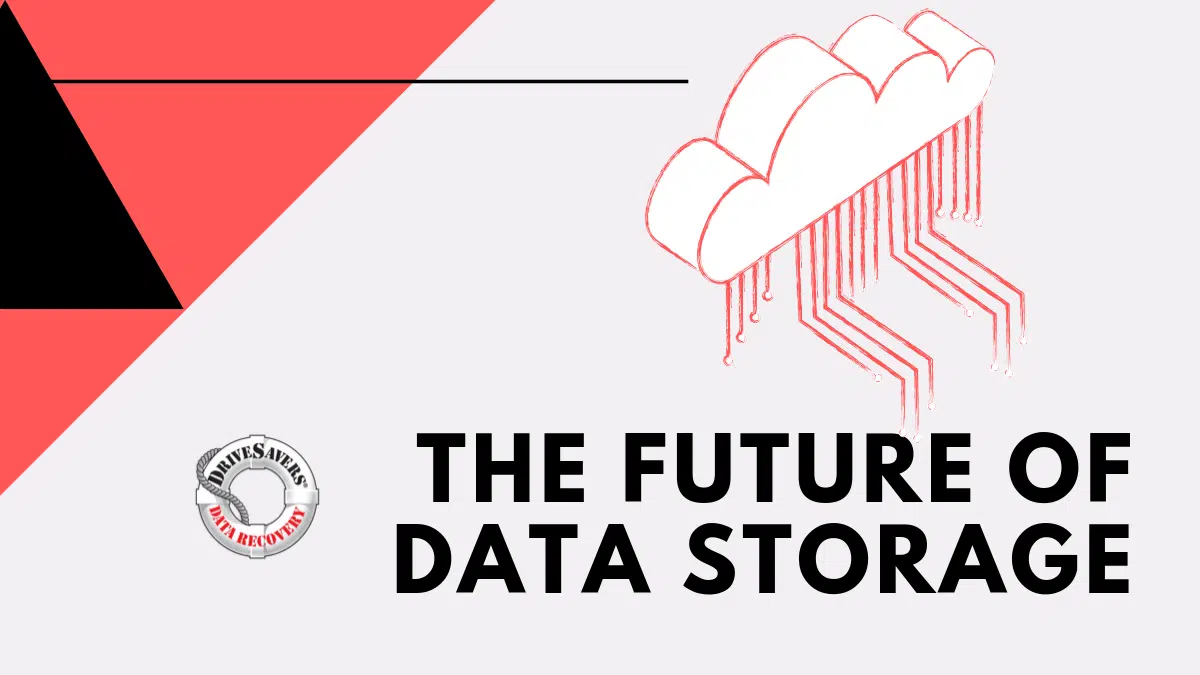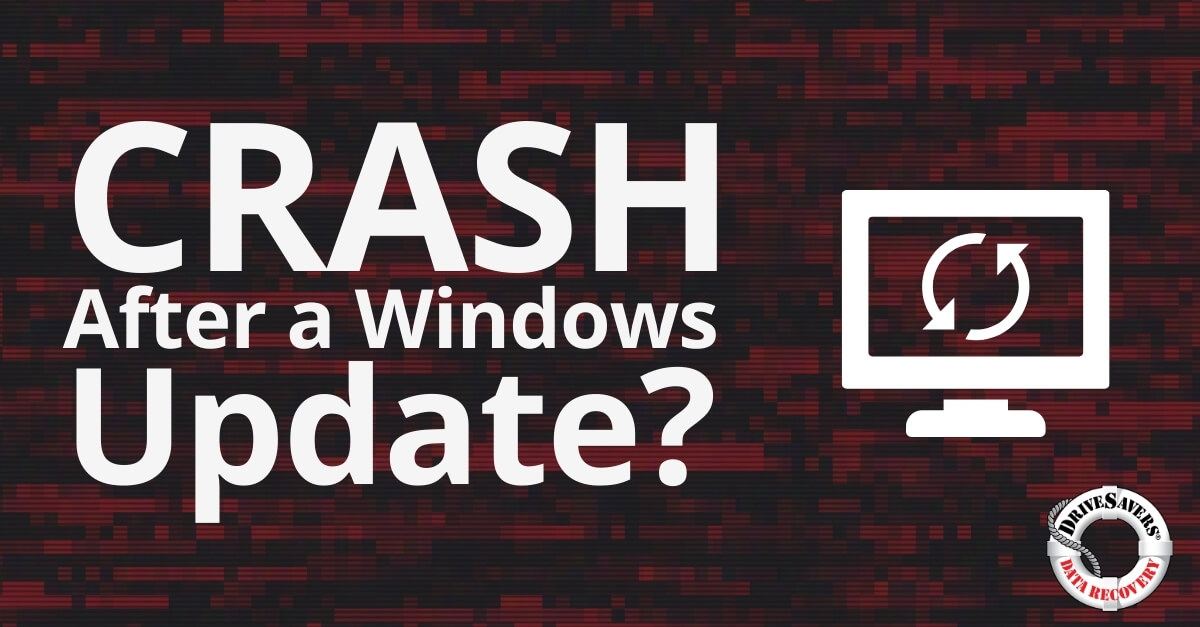Discover how DriveSavers recovered precious photos from Kate Grinberg's failed external hard drive.
What’s the Future of Data Storage?

Every day, more than 4.5 billion internet users relentlessly create an astronomical amount of data with every move they make on their computers, smartphones and other devices. That means by 2025 the amount of data worldwide will be around 175 zettabytes.
The sheer volume of that data is almost unimaginable. And the amount begs the question, where is that data going to be stored? For now, this monumental amount of information exists across a variety of platforms in many mediums, but this could change. So, what does the future hold for data storage devices?
Just as technology has rapidly transformed over the past several decades, so too will data storage. With that in mind, here are a few emerging technologies and trends to look out for in the future of data storage.
3 Emerging Data Storage Devices
#1: Helium Drives
Modern hard drives have traditionally not been air-tight. Modern helium large capacity drives are hermetically sealed to offer more storage per square inch, run cooler than air-filled hard drives and use less power to spin the discs thanks to helium’s lower resistance.
The increased storage capacity is an obvious benefit, and running cooler is a huge advantage. Many hard drives succumb to data-destroying damage as a result of overheating. Helium drives make this possibility far less likely.
These data storage devices, even though you may not have heard of them, are already available to consumers. Here’s one on Amazon selling for about $260 for 10 terabytes (TB). The price tag is a little high, but the decreased risk of data loss just might be worth it!
#2: Shingled Magnetic Recording (SMR)
SMR is a new way hard drives record data. Hard drives with this technology push tracks closer together with higher aerial densities. Data is stacked like shingles on a roof, increasing storage capacity in the same amount of space.
Over time, the stored data is trimmed without compromising the contents of the data, making the storage capacity even greater. Because the read head is smaller than the write head, the data can be read even after trimming.
Believe it or not, this data writing style doesn’t even require new equipment. An SMR configuration can run on a traditional hard drive. This keeps costs low and makes new SMR technology affordable for the average user.
This data storage technology may very well be in your next hard drive, given the affordable price point and availability of components!
#3: DNA
You read correctly. DNA. As in, the DNA in every single cell of our bodies.
In 2012, researchers at Harvard University successfully encoded human DNA with digital information. They chose to write a 53,400-word book in HTML, 11 JPEG images and one JavaScript program to the DNA.
DNA as a data storage technology can hold 2.2 petabytes (PB) of data per gram. That’s unparalleled in terms of storage capacity! In fact, the whole of the world’s data could easily fit into a single teaspoon of DNA. Think about that. All the data in the world. Incredible!
What’s more, this futuristic data storage technology is basically eternal. DNA holds data forever. Nothing else—on or off the market—can come close to such longevity.
Of course, there are a few drawbacks to using DNA for data storage. First, writing to and reading from DNA is a lengthy, painstaking process and makes this data storage technology very expensive. Encoding less than 100 kilobytes can cost up to $1,500.
Scientists are working to make this more accessible by using artificial DNA, but we’ll have to wait for the future to see how their efforts play out in the data storage marketplace.
Trends of the future
Less reliance on data centers
For decades, businesses and individuals have relied on data centers to keep their information secure. The large, faceless warehouses have been a keystone of data storage for many, many years. But their days may be numbered.
Data storage needs have grown as more and more data has been created. Users not only need more storage than ever, they desire accessibility, as well. For many, this has meant shifting away from large data centers and increasing their reliance on cloud-based data storage solutions.
In a recent interview with Datamation, Andres Rodriguez, former CTO of the New York Times and Hitachi said, “If you’re in a media company, like the [New York] Times, you see that everything goes digital and then the files get more numerous and the files get bigger. And so what starts to happen is all of the on-premise infrastructure starts breaking at the seams. And so, a lot of these companies have now moved in the last five years from, ‘Cloud, what? What the hell is it?’ to ‘Cloud first,’ to, more recently, ‘Cloud only.’”
The trend of moving away from data centers and toward the cloud comes with a caveat. Cloud users expect more than a futuristic data storage solution, they want service. Users want a secure, searchable form of data storage, almost like a data concierge.
In the future, data storage will be just as much a service as it is a commodity.
Tape is still on the table
Despite significant gains made in data storage technology over the past several decades (like the emergence of cloud storage), one thing remains the same: magnetic tape is an extremely reliable backup.
In 2011, Gmail experienced a bug resulting in the loss of thousands of accounts. How did their engineers replace the information? By using the backup tapes. The information contained on their tape backup had everything the engineers needed to fully recreate each deleted account in 30 hours. Amazing!
This anecdote may seem shocking to you, but Google isn’t alone. Many large companies and government organizations still rely on tape as their ultimate form of data storage backup. This form of data storage is cheap, easy to use, secure and offers a lot of storage for the space.
In 2017, IBM and Sony unveiled a single-palm tape with a theoretical capacity of 330 TB per square inch. Even the most advanced solid state hard drives can’t come close to this capacity per square inch (they typically hold 60 TB per square inch).
Businesses are taking note. In 2008, about 200,000 PB of tape was shipped worldwide. Today, more than one million PB are shipped annually.
In the future, much about data storage will change, but some things will remain the same. But no matter how cutting edge your data storage technology is or how much you back up your information, data loss will always be a risk.
That’s because technology isn’t perfect, and data loss can happen at any time. If you fall victim to data loss, either now or in the future, there is something you can do. Contact a data recovery specialist to get your information back.



